Why is WeChat advertising system broken?
There are two advertising schemes provided by Tencent.
1. “Subscription Messages” ads
If subscription accounts exceed 100k followers, they can apply to be “ads displayers”. Other companies can then display ads at the bottom of each of their messages
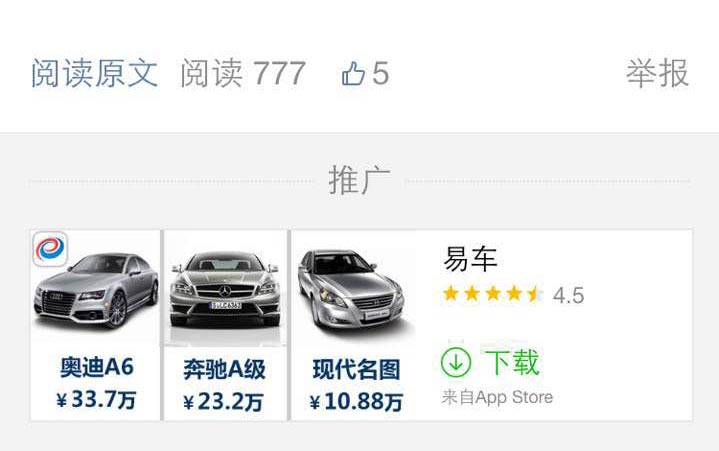
However, subscription account ads show poor return on investment for the accounts displaying the ads (so a lot of popular WeChat accounts are not using the WeChat advertising scheme at all) and most users don’t actually notice or click on them (click through rate is therefore extremely low).
For advertisers, the attractiveness is also questionable. These ads enable some targeting: you can pick your “target”’s gender, age, geographical location, and the category of accounts on which your ads will be displayed. However, cost per follower is rather high (10 RMB or so) and the metrics for targeting remain very rough.
2. Moments ads
Moments ads are much more visible but a much more pricey option (upward of 5 million RMB) to promote your brand. They are restricted to large companies and advertising groups.
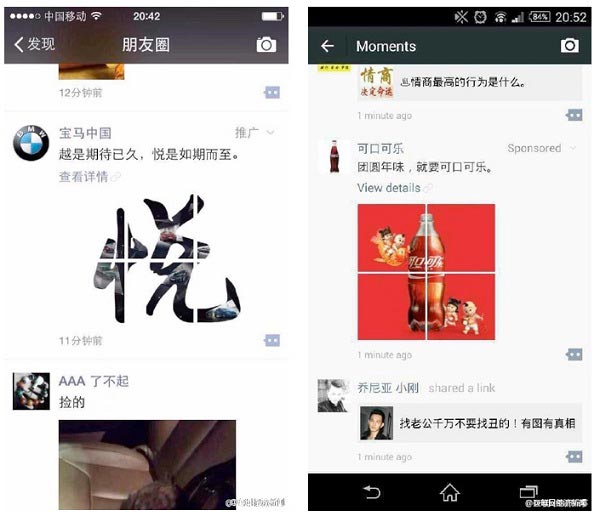
WeChat moment ads are also extremely expensive on a per-follower basis: studies show that one follower costs about 50 RMB (for a very low level of targeting).
3. Why none of them work
At the end of the day, you are left with two options to place your ads:
- Subscription account ads: a poorly targeted platform with average prices, low visibility and low conversion rate
- Moments ads: a very poorly targeted platform with extremely high prices, very high visibility but low conversion rate
The comparison is summarised in the table below:
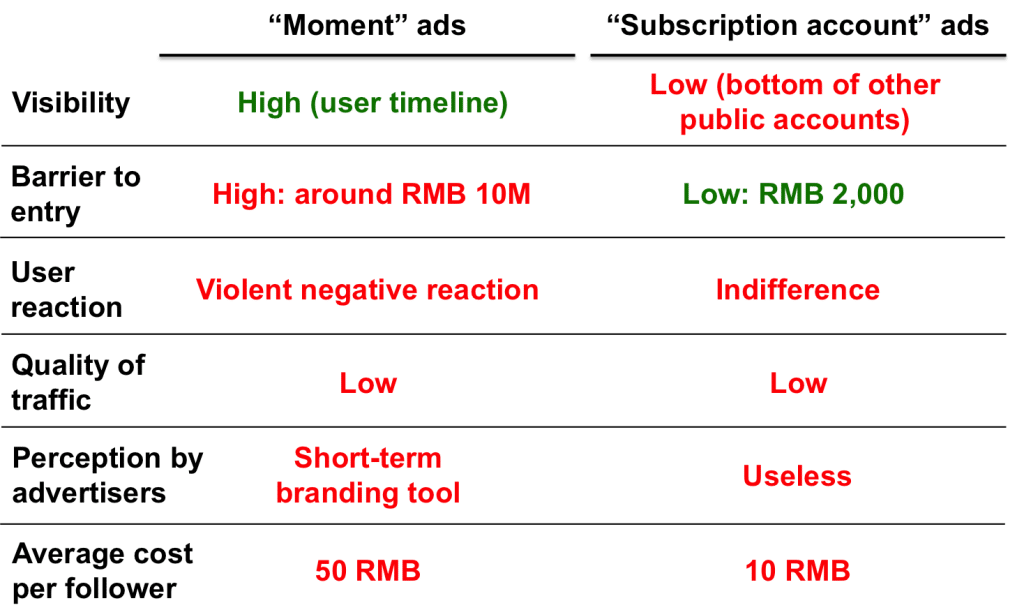
So, if Tencent ads don’t work, how to advertise on WeChat?
The power of Key Opinion Leaders
There is fortunately another way to advertise on WeChat: key opinion leaders.
Key Opinion Leaders (KOL) are other WeChat accounts which are influential in their specific niche and which are willing to talk about a certain brand in exchange for money or other perks.
KOL are a terrific ways to advertise because they are a trusted source of knowledge and advice for their followers. Advertising from KOL can be completely disguised as a product review or “coup de coeur”, or include discounts to incentivize conversion.
There are other ways to collaborate with KOL. We talked during a previous blog post about Jiutian, an influential fashion blogger who sometimes gives away products from brands in “viral campaigns”: a great way for said brands (here an eyewear brand) to push their products forward, and an efficient way for Jiutian to make her account even more attractive.
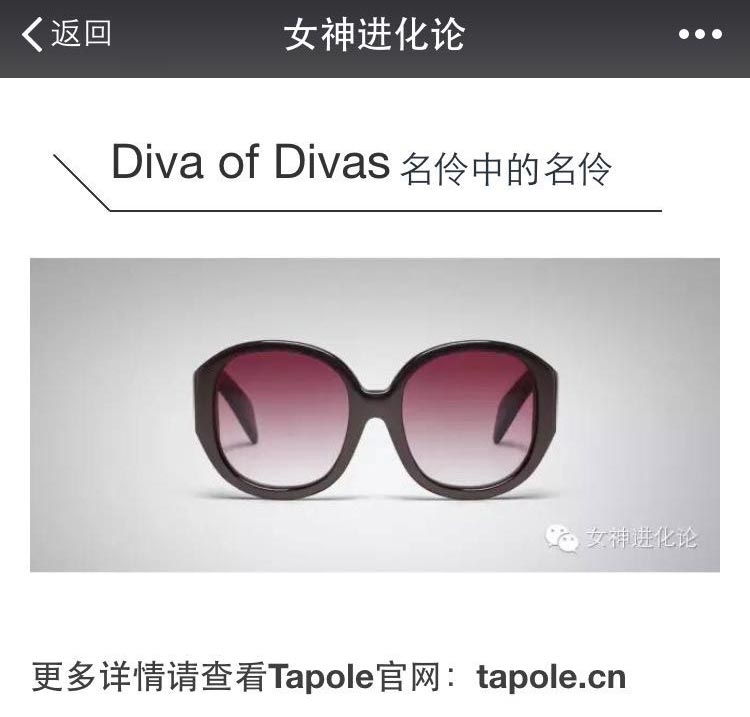
Price for a message on a good KOL usually ranges from 5k to 50k RMB (depending on the number of average views and followers, position of the message, time when it is sent, and amount of promotional content within the message)
How to find Key Opinion Leaders
Finding KOL’s is not easy. There were over 9 millions public accounts registered on WeChat as of early this year, and the number is growing fast. How to find the right account to talk about your brand?
A few channels are available:
- The search function from Sogou enables you to look for the most popular WeChat accounts in your industry and potentially reach out to them
address: http://weixin.sogou.com - Some companies such as wemedia.cn aggregate and run accounts in specific industries. They are a good option for a first screening
address: http://wemedia.cn - Some independent agents work with a variety of accounts accross many industries. Creating a good network of agents is a good way to build industry-specific database of WeChat KOL
- Finally, personal network might come handy when it comes to extremely niche accounts: simply figure out which accounts people in your target industry are following, and get in touch with these accounts
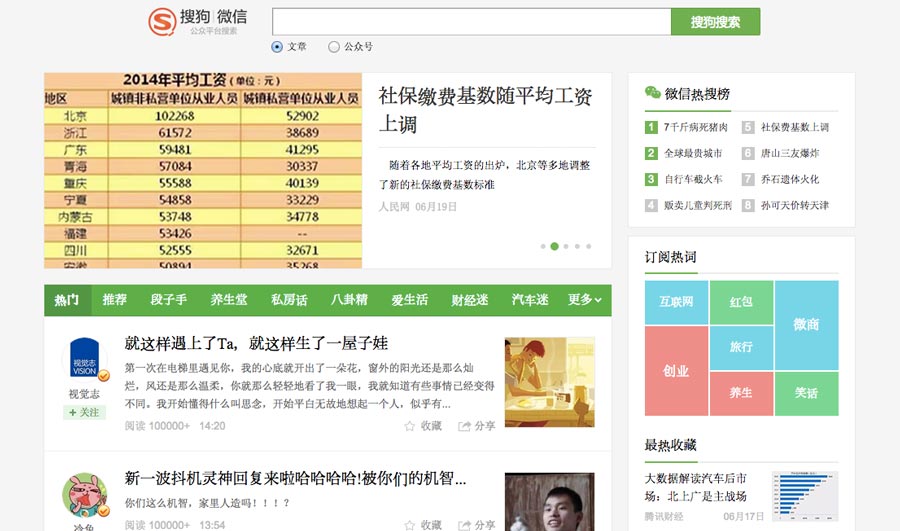
Agencies like WalktheChat would usually use a combination of the above channels, using aggregators, Sogou and agents to narrow-down to a few dozen accounts, and then conduct proper due-diligence in order to select the best value for money for clients.
The problem of fake Key Opinion Leaders
As you start using the methods above and building your KOL database, one problem will soon become obvious:
Fake WeChat advertising accounts.
Fake KOL are sometimes surprisingly difficult to detect for two main reasons:
- They have great content (because they steal it from other accounts)
- Most of their articles have a lot of views, because they use robots to click
The problem is aggravated by the fact that as the marketing value chain gets more complex (company => PR agency => specialised marketing agency => agent => account) there are a lot of incentives for some players to cheat.
Unrealistic KPI’s may also lead to cheating: if your marketing manager’s bonus is indexed on the number of new followers he or she gets to your account with a super-tight budget, there is clear incentive for misbehaving.
How to identify a WeChat KOL with a high ROI?
We’ve been running sales-focused campaigns for our clients in the past 3 years. And lately, we are consistently getting 300%-500% ROI on WeChat campaigns. Given most of KOL (key opinion leader) campaigns can hardly breakeven, this is an impressive result.
And as always, we are open to sharing our criteria for selecting the KOLs to maximize our clients’ ROI.
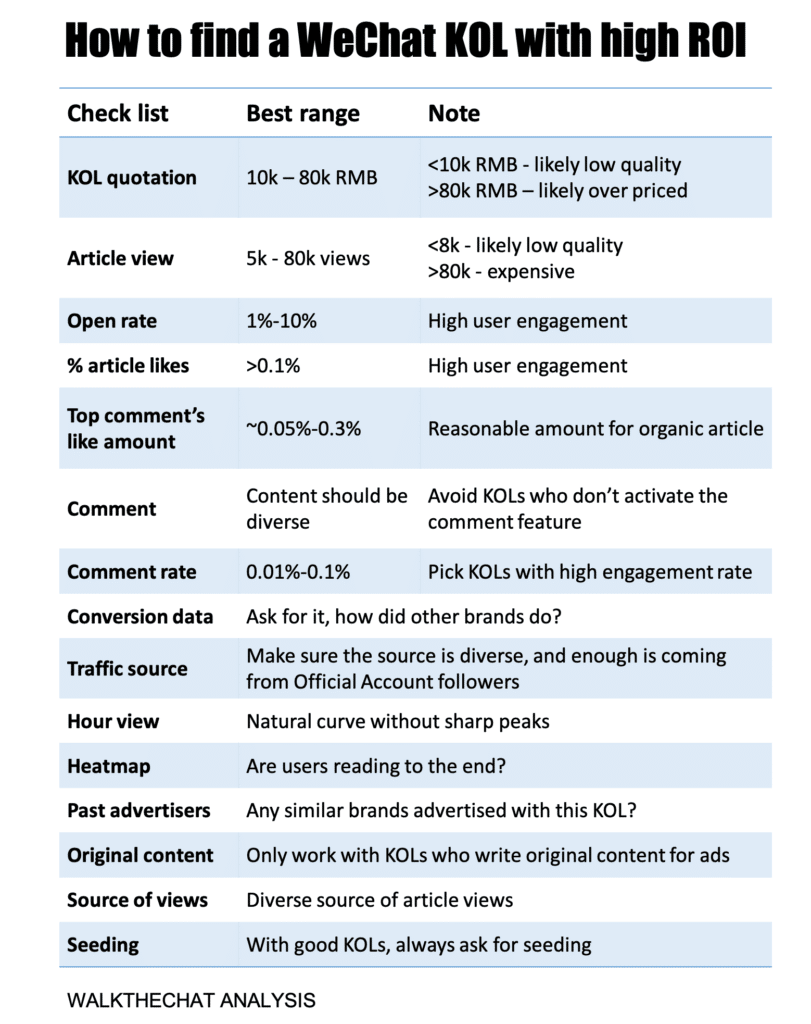
Note we mostly promote niche premium fashion/cosmetics brands
Data, data, data
Yes, data could be fake. But in reality, no one bothers to creates the perfect fake data. You just got to do thorough due diligence.
Is the cost reasonable? 10k – 80k RMB
The cost per article view for high-quality WeChat KOLs is usually 1- 2.5 RMB. We tend to work with KOLs who charge between 10k to 100k RMB per article. Below this range could indicate low-quality or an industry with lower prices (for example sports news compared to fashion or cosmetics).
A cost per view above 2.5 RMB often means an overpriced KOL, which would negatively impact ROI.
Article view 5,000- 80,000
To maximize the ROI, we specifically focus on working with influencers with article views between 5,000-80,000 for the first-article views. Smaller KOLs with high ROI are harder to identify, and high-quality KOL with views above 80,000 tend to charge over 100k for posting one article.
Most of our clients prefer to work with KOLs in the middle price range that can bring high ROI.
Open rate >1%
Open rate (average view/total follower amount) is a good indicator of followers’ loyalty and stickiness. For example, WalktheChat’s open rate is between 6% to 15%, since we are a small WeChat service account with niche but active followers. 5% is a high open rate for a WeChat subscription account. Ideally, you want to work with KOLs with an open rate between 1% to 10%.
>0.1% like rate
Above 0.1% like rate (Number of likes/number of article views) is a good indicator of a highly engaging account.
Other than the article likes, also pay attention to the top comment like. The most liked comment can usually receive around 0.05%-0.3% likes compared to the article’s number of views.
If you see an article with a lot of article likes but no likes on the comments, the likes are most likely fake.
Pay attention to the comments
Fake comments tend to look similar, while genuine comments usually are quite diverse in content.
A good comment rate (comments amount/views amount) is 0.1%-0.01%. For example, an article with 20k views with 10-20 comments is an excellent engagement rate.
If an account with over 10k view but don’t have any comments, it’s likely a fake account.
Ask for conversion data
A KOL that cares about the quality of his/her content should be able to give estimates of conversion rate. Some KOLs may refuse to share their conversion rates due to a lack of understanding of their own campaigns or because they’re trying to hide low performance. In this case, it’s best to test the KOL’s quality, starting with a seeding campaign.
KOL seeding means gifting your products to the KOL for them to try out. If the KOL likes your products, they might be able to mention it in blogs, thus brings free exposure. You can then measure the performance of the KOL by analyzing first-hand data.
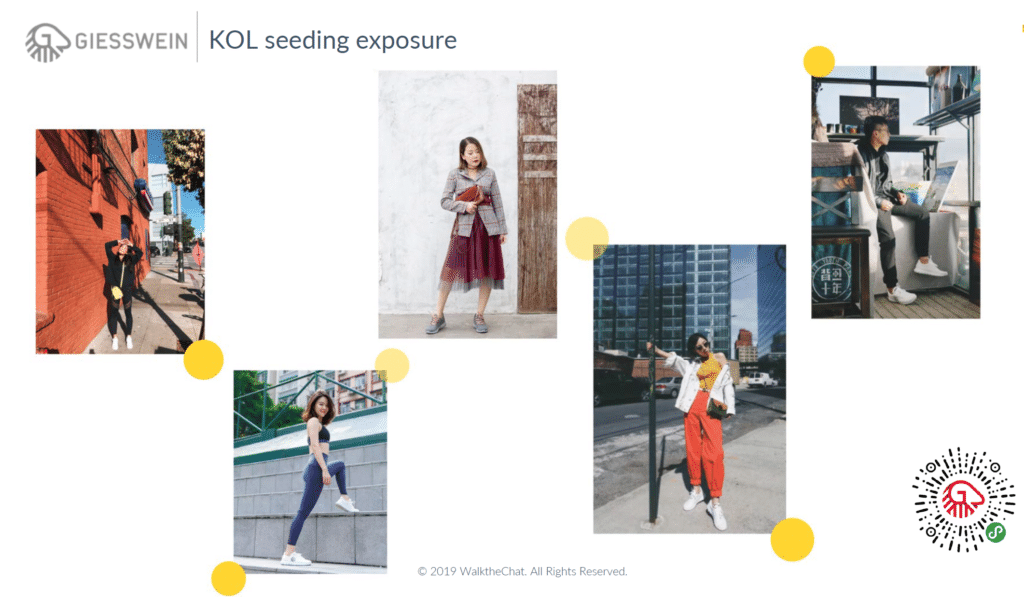
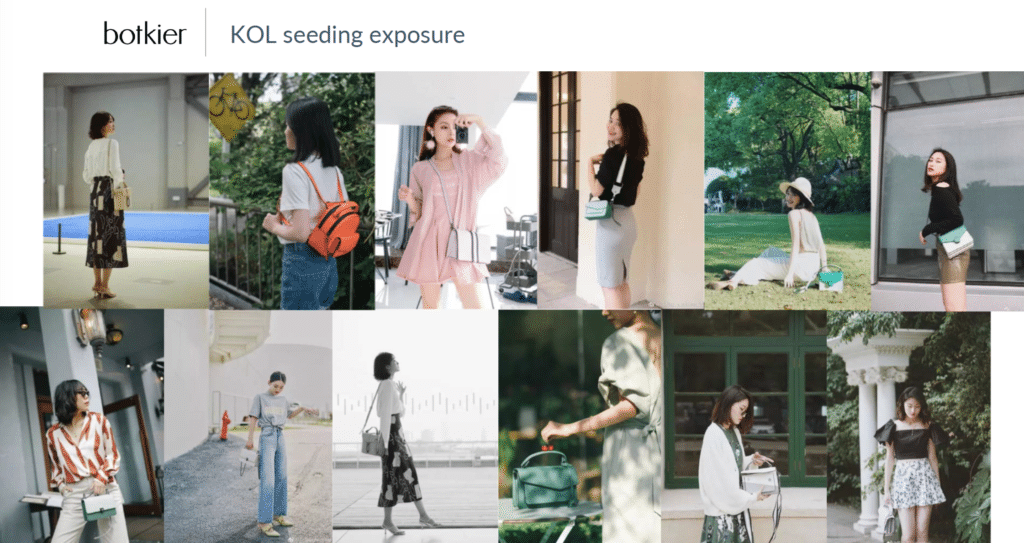
Ask for WeChat backend analytics screenshot
If the KOL is not able to provide conversion rate estimates, does not agree to seeding, and you are not able to tell if the traffic is real or not, then you can ask for a screenshot of their WeChat Official Account backend.
Traffic source
Good content can have a lot of re-shares, from different channels. For example, re-shares from friends, WeChat moments, history message, and “Liked by friends” section. Unless the article has gone viral, the traffic source should be coming from all of these sources.
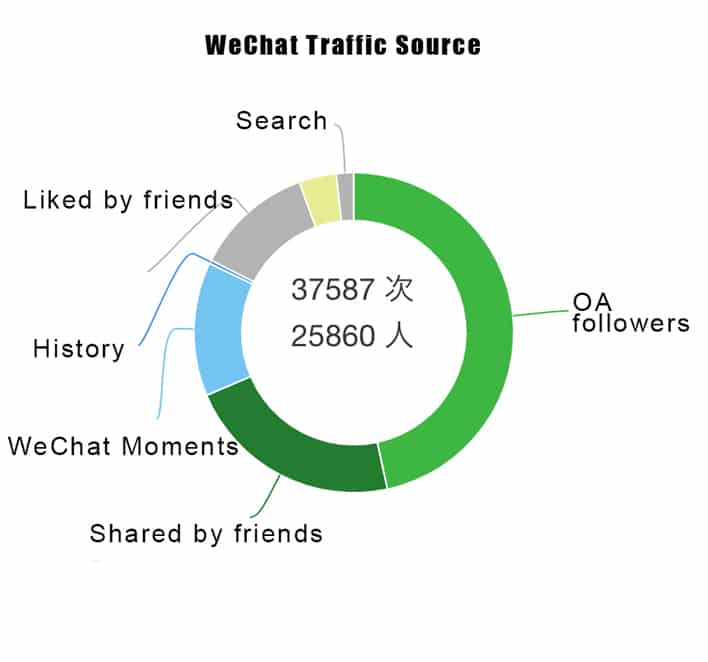
If one of the sources takes up the majority of the traffic, it is a warning that the account might be buying fake views.
Check to see the percentage of the Official Account followers who read the article. This is an excellent indicator of the stickiness fo the account.
Ask for the hourly view report
This is a typical article view by the hour.
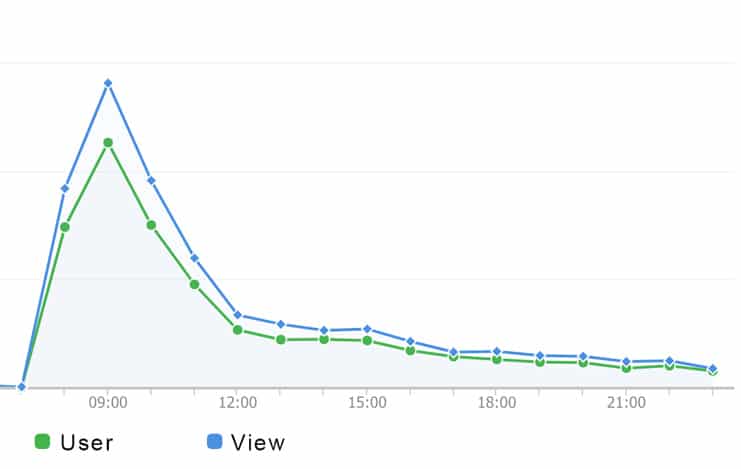
The maximum view will be within 2 hours of the article push, then its views will decrease gradually. The initial view amount during the first hour could usually indicate loyalty from the account followers.
A typical fake view report looks like this:
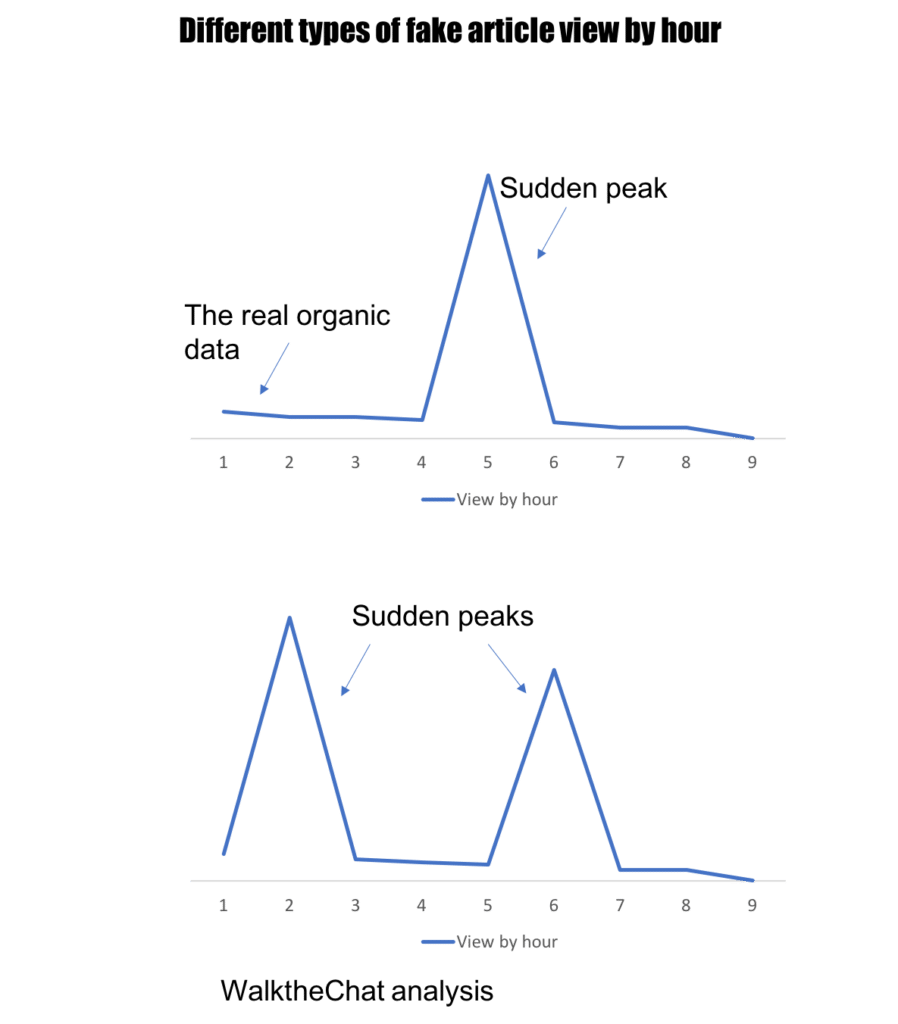
A sharp increase in a specific hour, and almost no view afterward.
Did users read the article all the way to the end?
Heatmap graph is a new analytics feature released by WeChat last week.
Since most KOLs put an action call only towards the very end of the article, whether readers reach the bottom of the article makes a bit difference.
For example, the graph below shows that half of the users finished reading the article.
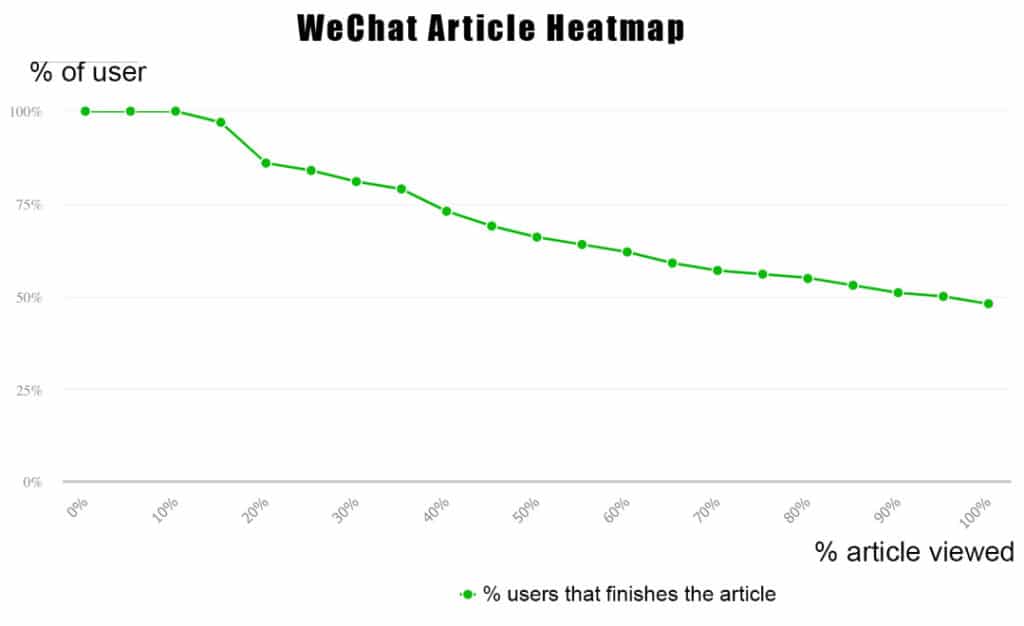
Other questions
Check out other brands promoted by the KOL
If you can find other similar brands also worked with the KOL, it’s a good indicator, especially if some of them engaged in repeat collaboration.
Is the KOL picky enough?
A good KOL would be very careful to select the product they want to promote. Do not work with a KOL who says yes to any brand.
Does the KOL write original content for the ads?
Only work with KOL that creates original advertising content. If the KOL agrees to re-share content provided by the brand, word by word, most likely it’s a poor quality KOL.
Individual KOL
WeChat public accounts are not the only KOL out there. You can also ask influential individuals to share your messages on their WeChat Moment.
This is another effective way of promoting your brand because the message which is shared by the individual KOL is one from your own account (as opposed to the Public Account KOL which writes a message with their account and adds a link or QR count to your brand’s WeChat account)
How to find KOL individual?
Ideally, your customers are the best individual KOLs you can find, because they have experienced your product, and their friends are likely to be your potential customers.
There are other options: start-ups like Launch Pilot can help you find the most influential students in your location to spread the message. Other agencies like WeMedia can help you to ask small/medium size companies’ CEOs in your particular industry to share your message. The price tag for sharing a message starts from 2000 RMB per share up to 10,000 depending on the profile of the specific individual.
Conclusion
Tencent ad system is performing poorly, and Key Opinion Leaders are a great alternative to promote your brand. However, they should be handled with care. The number of fake KOL and the difficulty to detect real user engagement make it challenging to ensure a high return on investment. If in doubt, reach out to us for some advice!

